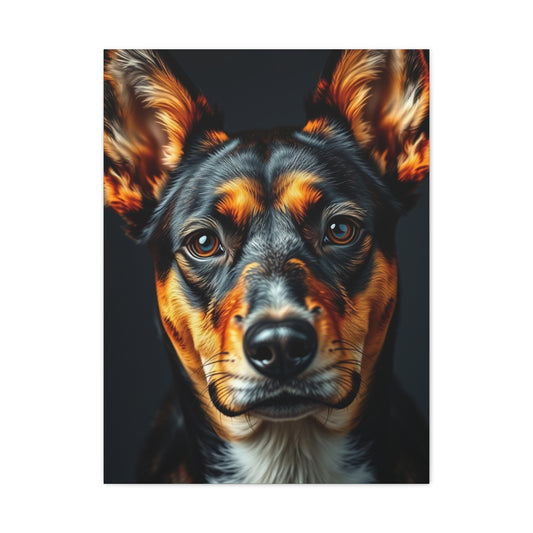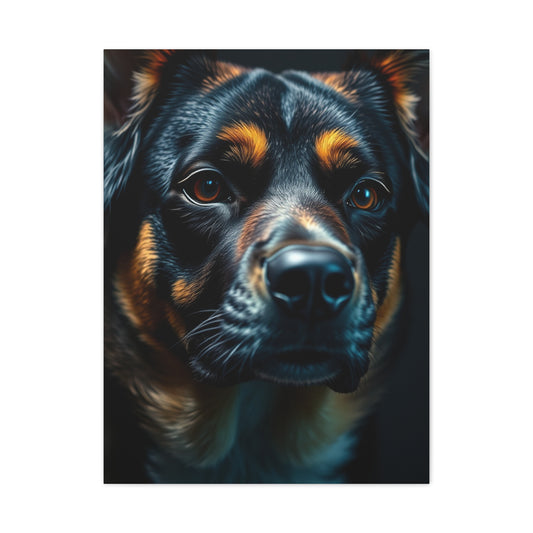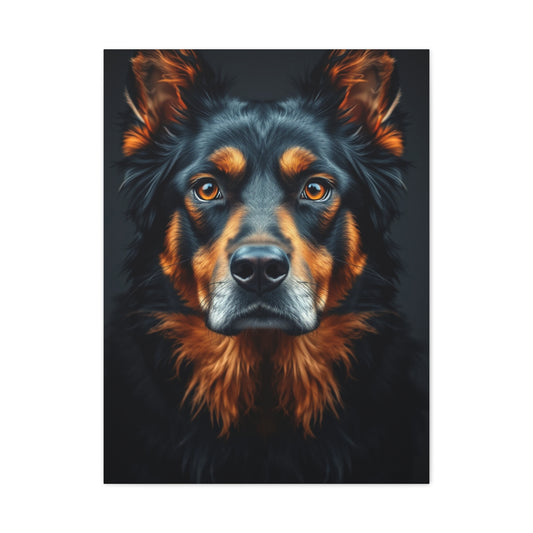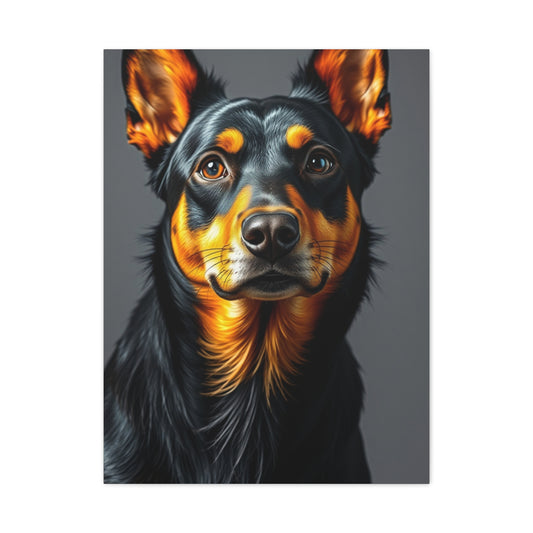Monochrome Elegance in Modern Spaces: Black and Tan Wall Art Inspirations
Black and tan wall art carries a distinctive charm rooted in the timeless principles of monochromatic design. While bold, colorful artwork often makes an immediate impact, monochrome creations offer a subtler yet equally powerful presence in modern interiors. Stripped of excessive color palettes, these pieces focus on the most fundamental aspects of artistic expression—light, shadow, proportion, and composition. This emphasis on essentials allows black and tan wall art to maintain an enduring relevance, no matter how design trends evolve.
One of the greatest strengths of monochrome wall art lies in its versatility. By working with a limited palette, these designs create harmony rather than competition within a space. A striking black-and-tan abstract piece, for example, can serve as a bold focal point in a minimalist living room, while delicate monochrome sketches may complement a cozy reading nook. In both scenarios, the simplicity of the palette ensures the artwork enhances rather than overwhelms the overall atmosphere. Homeowners and designers alike appreciate how easily these pieces integrate with modern furniture, textiles, and lighting choices, making them an adaptable option for nearly any room.
Contrary to the common misconception that monochrome equates to dullness, black and tan compositions can be remarkably dynamic. This energy often arises from contrasts in texture, form, and subject matter. A close-up photograph of a city skyline rendered in shades of black and sepia can convey both drama and nostalgia. Similarly, a large canvas featuring bold brushstrokes in tan against a black background can evoke movement, intensity, and contemporary flair. Far from sterile, these pieces often provide the grounding effect necessary to bring balance to colorful or eclectic interiors.
The key to maximizing the impact of black and tan artwork lies in thoughtful placement and complementary styling. For instance, positioning a geometric monochrome canvas against a crisp white wall immediately elevates the sense of modernity in the space. Pairing the same piece with warm wood tones, textured fabrics, or metallic accents introduces richness and warmth, ensuring the art feels integrated rather than isolated. Interior design experts often highlight that monochrome art thrives when supported by layered décor—plush rugs, patterned cushions, or subtle accent lighting can amplify its presence while softening its starkness.
Another compelling aspect of black and tan wall art is its ability to convey emotion and narrative without relying on vivid hues. These works often invite deeper engagement from viewers, encouraging them to focus on form, detail, and interpretation. A monochrome portrait, for instance, captures raw emotion more intimately than a colorful one, allowing the subtleties of expression to take center stage. In contemporary interiors where storytelling through décor is increasingly valued, this ability to spark conversation and reflection makes monochrome pieces especially meaningful.
Establishing Harmony through Defined Visual Anchors
The introduction of monochrome artwork into a living space should always begin with careful planning, particularly through the identification of a central anchor piece. This anchor functions as the visual heartbeat of the room, offering direction and coherence to the entire design scheme. Without it, interiors risk appearing visually fragmented, with too many competing elements drawing attention away from one another. The result can feel cluttered, disorganized, and lacking in harmony. By contrast, a singular, dominant piece—be it an expansive black-and-white photograph, a striking abstract composition, or a meticulously detailed architectural rendering—serves as a guidepost, creating unity across the surrounding décor and providing balance to supporting furniture and accents.
Selecting this central piece is not solely a matter of preference; it also reflects an understanding of proportion and visual hierarchy. An oversized photograph of a misty mountain range, for example, can immediately anchor a minimalist living room, directing the gaze outward and instilling an atmosphere of calm grandeur. Similarly, a bold abstract painting in shades of charcoal and ivory can become a conversation starter, allowing its bold contrasts and textures to set the stage for a modern, sophisticated aesthetic. Whether the anchor piece leans toward realism or abstraction, its primary role is to establish a focal point around which the rest of the space can unfold naturally.
Scale plays an equally crucial role in ensuring that monochrome art enhances rather than disrupts the flow of a room. Designers often reference a key principle when choosing artwork size: the piece should span approximately two-thirds the width of the furniture it rests above. For instance, if a large sofa measures three meters across, the artwork should ideally extend about two meters in width to maintain balance. This proportion creates a sense of intentionality, signaling that the placement was deliberate rather than arbitrary. Too small a piece can feel insignificant, leaving awkward stretches of negative space, while one that is too large can overpower the room and crowd surrounding elements. Achieving this proportion is especially vital in minimalist spaces where every object must feel purposeful.
The versatility of monochrome artwork makes it particularly well-suited to large-scale displays. Grayscale landscape photography, for instance, captures the mood of natural environments while avoiding the complexities of competing color palettes. A sweeping image of a forest, shoreline, or desert rendered in shades of black and white invites contemplation, creating atmosphere without dictating the tones of other décor. Similarly, abstract monochrome works can highlight either geometric precision or flowing organic patterns, each offering its own personality. Sharp, angular designs may pair well with modern furnishings characterized by clean lines and metallic finishes, while softer, fluid compositions resonate with curved silhouettes and textured fabrics.
Once the piece and its scale have been determined, placement becomes the next consideration, as it can dramatically influence how the artwork is perceived. Designers recommend aligning the center of the artwork at approximately 145 centimeters from the floor. This measurement reflects the average eye level and ensures that the piece can be comfortably appreciated whether one is standing or seated. The subtlety of this detail demonstrates an understanding of human interaction with space; when art is hung too high, it risks feeling disconnected, while when it is too low, it can intrude on the furniture beneath it. Striking the right balance ensures harmony and accessibility.
Equally important is the clearance between the bottom of the frame and the top of the furniture it hovers above. A space of 15 to 20 centimeters is often ideal, offering the artwork room to breathe while maintaining its close relationship with the furniture. This buffer prevents visual crowding and helps frame the artwork as an integral component of the overall design. When done thoughtfully, the artwork does not merely hang on a wall—it becomes a dialogue partner with the sofa, sideboard, or bed beneath it, each complementing the other to produce an atmosphere of refinement.
Ultimately, the power of monochrome artwork lies in its ability to simplify and elevate. By stripping away the distraction of color, it emphasizes foundational artistic qualities: light, shadow, form, and balance. The process of incorporating these works—through careful selection of an anchor piece, mindful attention to scale, and deliberate placement—ensures that they do not just fill empty walls but instead transform the space into a cohesive and elegant environment.
Enhancing Depth with Textural Contrasts
One of the most effective ways to elevate monochrome interiors, especially those that rely on black and tan wall art, is through the deliberate use of textural contrasts. In environments stripped of vibrant color, textures step into the spotlight, becoming the key players in shaping how a space feels and how it resonates with those who inhabit it. Without the distraction of a bold palette, the human eye is drawn to the subtleties of surface, form, and material, creating an atmosphere that is both visually engaging and sensorially rich.
When working within a neutral scheme, the danger lies in creating a space that feels flat, cold, or one-dimensional. Monochrome artwork brings a sense of refinement and clarity, but if not paired with other tactile qualities, the effect can lean toward austerity. This is where thoughtful layering of materials becomes essential. Introducing texture not only softens sharp edges but also enhances depth, making the room feel lived-in and inviting.
Natural fibers are among the most effective tools for this purpose. A handwoven wool throw, for instance, casually draped over the arm of a minimalist sofa can transform the mood of a room. It introduces softness and warmth that counterbalance the crisp geometry of black and white wall art. Similarly, a jute or sisal rug anchoring a sleek seating arrangement offers both grounding and organic character, providing a tactile undercurrent that ties together the visual story of the room. These elements harmonize beautifully with monochrome artwork by adding subtle, earthy tones that echo the warmth of tan accents while preserving the clean lines of the overall aesthetic.
Upholstery plays another crucial role in enriching monochrome interiors. Fabrics such as boucle, tweed, or textured weaves bring in visual variety without overwhelming the simplicity of the color scheme. These textiles create an invitation not only for the eyes but also for the hands, encouraging occupants to physically connect with the space. In this sense, texture becomes a bridge between visual appreciation and sensory experience.
Window treatments also contribute significantly to this layered effect. Linen curtains, for example, are not just functional but also poetic. Their natural translucency filters light in soft, diffused patterns that echo the tonal gradations found in monochrome photography. This creates a subtle interplay between art and environment, where the light itself becomes an extension of the design. Depending on the time of day, the filtered light shifts in quality, providing dynamic contrast that enlivens both the wall art and the surrounding furnishings.
Metallic accents can be incorporated to further enhance the atmosphere. Brushed steel, matte black finishes, or aged brass frames surrounding monochrome prints offer reflectivity and understated glamour. These small details catch and scatter light in unexpected ways, bringing a touch of sophistication while maintaining cohesion with the overall neutral palette. When repeated throughout the space—perhaps in light fixtures, side tables, or decorative objects—these metallic touches establish rhythm and continuity, ensuring the design feels intentional rather than accidental.
The key to success lies in repetition and balance. By introducing tactile elements across multiple areas—textured rugs beneath the feet, soft throws across furniture, woven fabrics on cushions, and metallic highlights framing the artwork—designers can achieve cohesion while avoiding monotony. Each element reinforces the others, creating layers of depth that invite exploration and engagement.
Selecting Frames that Amplify Sophistication
Frames play an often underestimated role in interior styling. While many people think of them as simple borders designed to protect an artwork, frames in reality are integral design tools that affect perception, tone, and cohesion within a living space. Especially when dealing with monochrome art, where color is intentionally restrained, frame selection becomes even more influential. The frame essentially acts as an extension of the art, amplifying its voice, softening its presence, or guiding how it interacts with the surrounding environment.
A black frame, for example, brings a strong, graphic edge to the composition. Its sharp outline sharpens contrast and draws attention to the visual drama of black-and-white photography, architectural sketches, or abstract ink drawings. These frames suit minimalistic or modern interiors where precision and clarity dominate the design language. The crisp borders they create around a piece can help it stand out as a bold statement in otherwise understated surroundings.
On the other hand, light-toned woods such as ash, oak, or maple lend a natural warmth that tempers the starkness of monochrome works. They create an inviting balance between visual restraint and organic texture, making them excellent companions for interiors rooted in Scandinavian or Japandi design philosophies. When paired with furniture featuring neutral upholstery, a light wooden frame forms a subtle bridge between art and environment, ensuring the piece feels integrated rather than isolated.
For those aiming to introduce more depth and richness, darker woods like walnut or mahogany provide gravity and timeless sophistication. Their deeper hues enhance the natural movement of flowing landscapes, figurative sketches, or organic abstract art, giving the impression of maturity and permanence. These frames pair especially well with leather furnishings, earthy tones, or interiors that value tradition while still embracing contemporary simplicity.
White frames, by contrast, are versatile tools of subtlety. They blend seamlessly into pale walls and help create visual consistency in gallery-style arrangements where multiple artworks need to coexist without competing. A white border almost disappears, allowing the artwork itself to take precedence while still benefiting from a defined edge. In compact spaces, where too many dark frames might overwhelm, white frames help maintain a clean, airy impression while emphasizing unity.
For urban lofts or industrial-inspired spaces, brushed metal frames provide yet another layer of sophistication. Their subtle texture resonates with steel fixtures, exposed pipes, or aluminum surfaces common in such interiors. The metallic sheen neither dominates nor retreats—it offers a balanced elegance that echoes the structural elements of the environment. Silver, gunmetal, or even matte bronze options can all serve as complementary details that unify raw materials with refined artistry.
When framing multiple pieces together, consistency becomes critical. Uniform frame widths help maintain order and ensure that the eye perceives the collection as harmonious rather than chaotic. However, subtle variation in finishes can add intrigue. For instance, combining frames of identical thickness in different yet related materials—perhaps pairing oak with walnut, or mixing matte black with brushed steel—introduces nuance without breaking compositional unity. This method respects the individuality of each piece while upholding a cohesive rhythm across the wall.
Another factor to consider is scale. A frame that is too narrow may fail to give the artwork sufficient presence, while one that is too thick may overwhelm delicate compositions. The goal is to strike a balance that both protects and elevates. Similarly, matting—when applied thoughtfully—can enhance breathing space around the image and prevent the composition from feeling crowded. Neutral mats, especially in shades of ivory, soft gray, or jet black, further refine the dialogue between frame and artwork.
Ultimately, frame selection is an art in itself. The right choice can transform how a monochrome piece resonates within a space, whether through bold contrast, natural warmth, subtle neutrality, or industrial alignment. By considering materials, finishes, proportions, and consistency across groupings, homeowners and designers alike can amplify sophistication, ensuring that the frame does not merely hold the art but actively contributes to the room’s aesthetic story.
Introducing Color with Purposeful Precision
When decorating with monochrome artwork, one of the most impactful strategies for elevating the overall effect of a space is the introduction of carefully chosen color accents. While black, white, and varying shades of gray establish a timeless and neutral foundation, the deliberate inclusion of color brings warmth, dimension, and a sense of liveliness without undermining the clarity of a monochrome scheme. The guiding principle here is balance through restraint, ensuring that any color introduced functions as an enhancement rather than a distraction.
Designers frequently emphasize that accent hues should occupy no more than ten percent of the visible area in a room. This rule of proportion is not arbitrary—it is rooted in the psychology of visual focus. By allowing monochrome artwork to dominate the visual field, accent colors serve as complementary details that frame and enrich the primary attraction. If too much color is introduced, the eye becomes confused, leading to a space that feels scattered and lacking cohesion. However, when used sparingly, color can transform an otherwise stark environment into one that radiates sophistication, personality, and comfort.
One of the most effective approaches to integrating color within a monochrome setting is through the use of metallic accents. Warm metals such as copper, brass, or rose gold harmonize particularly well with black and white art pieces. Their reflective qualities add a subtle glow, infusing the room with warmth while avoiding the heaviness that bolder pigments might impose. A copper-framed mirror, a set of brass candlesticks, or rose gold detailing on a lamp base can inject quiet luxury into the environment without pulling attention away from the artwork.
Another timeless method is the incorporation of greenery. Plants, with their naturally vibrant shades of green, serve as living accents that bring a sense of renewal and organic energy into interiors. Even when placed in understated ceramic or stone vessels, a single leafy plant or a minimalist arrangement of succulents can soften the austerity of a monochrome palette. In addition to enhancing visual appeal, greenery introduces a tactile and sensory dimension, reminding viewers of nature’s role in grounding modern design aesthetics.
Textiles offer yet another layer for introducing subtle but effective accents. Cushions, throws, or area rugs in earth-inspired tones such as terracotta, muted mustard, or sage green infuse the room with seasonal character. These hues echo the natural world, allowing the space to feel dynamic and evolving without overwhelming the simplicity of monochrome wall art. Textiles also introduce softness and tactility, which balance the often crisp, clean lines associated with black and white compositions. For instance, a charcoal sofa adorned with a muted terracotta cushion and a sage-colored throw offers just the right balance of neutrality and liveliness.
One of the most nuanced techniques designers employ is extracting subtle undertones already present in a monochrome artwork. For example, a stormy sky photograph may contain faint bluish-gray hues, while a desert landscape rendered in black and white might carry sepia-like shadows. By echoing these understated tones elsewhere in the room—perhaps through pottery, decorative bowls, or small-scale accessories—the designer creates a sense of cohesion that feels organic rather than contrived. This method respects the integrity of the monochrome work while weaving in a layer of visual depth that feels seamless.
Lighting as the Defining Element of Presentation
When it comes to interior design, few aspects are as transformative as lighting. While furniture, wall colors, and accessories establish the foundation of a space, it is lighting that determines how these elements are perceived. For black and tan wall art solutions in modern living spaces, illumination is not just an accessory but a central design tool that can alter mood, create focus, and turn an understated artwork into the heart of a room. Without deliberate lighting choices, even the most striking piece may lose its presence. With the right balance, however, lighting acts as a silent partner, magnifying detail, contrast, and texture in ways that elevate the overall experience.
A key principle to keep in mind is that lighting should be layered rather than singular. Relying on a single overhead fixture may brighten the room but fails to highlight the artistry of individual pieces. Instead, a layered approach creates depth and dimension. Ambient lighting, such as recessed ceiling fixtures or diffused pendant lights, sets the general tone of brightness within the room. Task lighting, often overlooked in art presentation, plays a dual role—it ensures functional visibility while also accentuating specific focal areas. For example, a floor lamp angled towards a monochrome canvas not only illuminates a corner but also establishes a deliberate point of emphasis.
The third layer, accent lighting, is perhaps the most powerful when showcasing black and tan art. Adjustable spotlights, track lighting, or dedicated picture lights create intentional focus on the artwork. This type of illumination adds drama by casting shadows that reveal subtle textures, brushstrokes, or photographic detail that might otherwise remain unnoticed. In monochromatic pieces where contrast defines expression, these shadows and highlights are crucial. By experimenting with placement and angles, homeowners can achieve a gallery-like effect that elevates the ordinary into the extraordinary.
Equally significant is the choice of color temperature. Light that is too cool (above 4000 Kelvin) risks washing out the warm undertones of tan shades, giving the room a sterile or clinical feel. On the other hand, overly warm bulbs can sometimes distort the clarity of black elements. A balanced range, typically between 2700–3000 Kelvin, creates an inviting atmosphere while preserving the richness of tonal variation. In this spectrum, black retains its depth and tan radiates with a natural warmth, offering a cohesive harmony between art and environment.
Orientation also plays a pivotal role. A south-facing wall may expose artwork to strong daylight, which, while vibrant, carries risks of fading over time. For this reason, UV-stable prints or protective coatings are recommended to maintain longevity. North-facing spaces, by contrast, often provide diffuse, steady light throughout the day. This softer illumination is especially flattering for black and white photography or abstract works where consistency of tone matters more than brilliance.
Modern innovations in lighting have expanded possibilities beyond traditional fixtures. Smart lighting systems and dimmable LEDs empower homeowners to control not only brightness but also atmosphere with precision. A living room can shift seamlessly from a bright, energizing environment during the day to an intimate, gallery-like setting in the evening. With programmable settings, the same artwork can take on multiple personalities depending on the occasion—relaxed for casual gatherings, dramatic for dinner parties, or subdued for reflective moments.
The positioning of light also deserves consideration. Direct light shining straight onto a piece can create glare or flatten its features, while side lighting or angled beams introduce shadows that highlight depth. Experimentation is often the best guide here, as every room interacts differently with reflection and contrast. Mirrors, glossy surfaces, and even the wall color surrounding the artwork influence how lighting behaves, making personalization essential.
Curating Gallery Wall Narratives
A gallery wall is far more than a decorative arrangement of frames—it is a storytelling device that allows homeowners, designers, and art enthusiasts to narrate their personal journey through a collection of visual moments. When executed thoughtfully, it elevates a plain wall into a layered narrative, weaving together multiple works of art into a unified composition. Rather than existing as isolated pieces, each artwork becomes part of a broader story, reflecting personality, taste, and creative vision.
The process of curating a gallery wall begins with a sense of purpose. Designers often encourage individuals to ask themselves what they want the wall to say. Is it intended to showcase travel memories, express a passion for photography, highlight modern abstract pieces, or blend family heritage with contemporary art? Having a guiding theme ensures coherence and prevents the arrangement from appearing disjointed. Without such intentionality, even the most beautiful artworks can feel scattered and disconnected.
Once a guiding theme is established, planning the layout becomes the next critical step. Meticulous preparation separates a harmonious gallery wall from one that feels chaotic. Many professionals suggest using paper cutouts or cardboard templates to experiment with arrangements before committing to hammering nails into the wall. This strategy not only saves time but also provides a tangible sense of proportion and rhythm. Maintaining consistent spacing between frames—generally between 5 and 7 centimeters—helps establish visual flow, while slight variations in height can add a touch of spontaneity and prevent the layout from looking too rigid or mechanical.
Scale plays an equally vital role in the success of a gallery wall. A large, central piece often serves as the anchor, guiding the viewer’s eye and setting the tone for the entire arrangement. Smaller works act as supporting characters, framing the dominant piece and adding layers of meaning. For example, a striking black-and-white portrait at the center might be surrounded by smaller sketches, abstract shapes, or written quotes, creating a dialogue that feels cohesive yet dynamic.
Avoiding Frequent Styling Missteps
Designing a monochrome interior with black and tan wall art requires more than simply hanging attractive pieces—it demands careful attention to proportion, balance, and practicality. Many homeowners fall into recurring traps that compromise the overall elegance of their spaces. By recognizing these pitfalls in advance, you can craft an environment that feels deliberate, cohesive, and refined rather than cluttered or underwhelming.
One of the most common mistakes lies in choosing artwork of the wrong scale. When a piece is too small for a wide or tall wall, it loses impact and feels lost against the expanse of space. Guests may overlook it altogether, reducing the intended effect of the artwork as a focal point. On the other hand, oversized pieces in compact rooms can dominate the visual field, creating a sense of imbalance or even claustrophobia. A helpful guideline is that artwork should generally occupy around two-thirds to three-quarters of the wall space above a piece of furniture. For instance, a large abstract monochrome canvas above a sofa should align roughly with its width, leaving margins on either side to frame the composition naturally.
Another issue is insufficient contrast between artwork and wall color. If the tones of the walls and the artwork blend too closely, the image risks disappearing into the background. For example, a piece featuring tan shades may fade into beige walls, while black-and-white photography displayed against a charcoal-gray wall may lack distinction. Contrast is what gives art its clarity and presence. Sometimes this can be achieved not only through wall color but also with thoughtful use of frames or accent lighting.
Equally problematic is the inconsistent use of frames within gallery-style arrangements. A gallery wall thrives on balance and rhythm, but when frames vary drastically in color, material, or thickness, the result can feel haphazard rather than curated. While it is not necessary for every frame to be identical, there should be a unifying theme—whether that is consistent use of black wood, slim metallic edges, or even a shared matting style. Consistency in framing creates a sense of order that allows the diversity of the artwork itself to shine without feeling chaotic.
Beyond visual factors, practical placement considerations often go overlooked. For example, artwork installed too high on a wall or in hard-to-reach places can become a challenge to maintain. Dust and dirt inevitably accumulate, and if pieces are inaccessible, they may quickly lose their crisp appearance. Positioning artwork within reach not only ensures easier cleaning but also keeps it at eye level, which is the ideal height for appreciation.
Another practical yet critical oversight is exposure to sunlight without protection. Direct UV rays can quickly degrade both photographs and paintings, leading to fading and discoloration. This is especially important in monochrome art where tonal balance is everything; once black pigments begin to dull, the piece loses its intended sharpness. Solutions include installing UV-protective glazing, positioning artwork away from direct windows, or investing in window treatments that diffuse natural light without sacrificing brightness.
It’s also worth noting the role of room functionality. In high-traffic zones such as hallways or living rooms, large fragile frames with glass may be at risk of accidental damage. Conversely, in dining areas or kitchens, heat and moisture may affect the longevity of prints and canvases if not properly protected. Matching the durability of the materials to the function of the room ensures that the investment in art remains secure.
Incorporating Smart Technology for Modern Living
Technology offers innovative methods of enhancing artwork presentation. Smart lighting systems allow automated adjustments throughout the day, ensuring consistent visual impact. Digital display frames rotate collections, providing variety without additional wall space. Projection mapping introduces experimental opportunities for blending digital visuals with physical pieces.
Smart window treatments with UV filtering preserve artwork longevity while optimizing natural illumination. Environmental monitoring devices further safeguard investments by alerting homeowners to humidity, temperature, or light fluctuations that could damage valuable prints.
One of the greatest strengths of monochrome foundations lies in their adaptability to seasonal updates. Winter may highlight cozy elements such as wool rugs and warm lighting, while spring introduces greenery and lighter fabrics. Summer arrangements emphasize natural light and breezy textiles, while autumn integrates deeper tones like copper or terracotta. Through these subtle shifts, homeowners maintain freshness without altering the foundational integrity of their interiors.
Future Directions in Art and Technology
The world of interior design and art display is undergoing a profound transformation, shaped by the rapid evolution of technology and the growing demand for sustainability. For black and tan wall art solutions in modern living spaces, these innovations promise not only greater convenience and personalization but also a deeper alignment between artistic expression and contemporary lifestyles. By anticipating these changes, homeowners and designers can make choices that keep their spaces both timeless and future-ready.
One of the most exciting developments lies in sustainable printing technologies. Traditional art reproduction often relies on inks and processes that are resource-intensive and potentially harmful to the environment. However, new eco-conscious printing methods—such as water-based pigments and recycled substrates—are becoming widely available. These innovations ensure that homeowners can acquire pieces with reduced environmental footprints while still maintaining archival standards, meaning the prints resist fading and degradation over decades. This balance of sustainability and durability reflects a broader cultural shift: people want their décor to embody not only beauty but also responsibility.
In parallel, augmented reality (AR) tools are revolutionizing the way art is chosen and integrated into interiors. In the past, buyers often had to imagine how a piece might look in their home, leading to uncertainty or hesitation. Today, AR-enabled apps allow users to project digital renderings of black and tan artwork directly onto their walls using smartphones or tablets. This creates an accurate preview of scale, placement, and harmony with existing décor before any purchase is made. As AR tools become more refined, they may even allow for interactive testing of frames, matting options, and lighting conditions, reducing guesswork and enhancing confidence in design decisions.
Equally transformative is the role of artificial intelligence (AI) in curation. With vast amounts of data on artistic styles, design preferences, and market trends, AI algorithms can connect homeowners with pieces that resonate on a highly personal level. Instead of sifting through thousands of options, buyers can receive curated recommendations aligned with their taste—whether they lean toward minimalist black-and-white photography, abstract forms in muted tan tones, or geometric compositions with strong linear balance. AI also facilitates connections with emerging artists, democratizing exposure and allowing lesser-known creators to find audiences who might otherwise never encounter their work. This personalization ensures that homes reflect individuality rather than generic trends.
The integration of smart home technologies further signals a future where artwork presentation will evolve beyond static displays. Responsive lighting systems, for instance, can adjust illumination based on time of day, mood settings, or even occupancy. A black and tan canvas might appear subtly highlighted with warm tones in the evening while crisp daylight replication ensures clarity during daytime hours. Similarly, automated climate control systems can preserve delicate works by regulating humidity and temperature, conditions that are essential for maintaining the integrity of fine art. These technologies extend the life of pieces while also making daily interactions with art more dynamic and enjoyable.
Another promising frontier is the development of digital display technologies that mimic traditional artwork presentation. Ultra-high-definition digital canvases are now capable of rendering textures and tonal variations with remarkable accuracy, giving the illusion of physical brushstrokes or photographic grain. For those who enjoy variety, these displays can cycle through curated selections, allowing homeowners to enjoy different black and tan artworks throughout the week without needing to physically swap pieces. While purists may still prefer the tactile authenticity of physical prints, digital options provide flexibility for evolving tastes and multifunctional spaces.
Ultimately, the fusion of art and technology points toward a future where wall décor is not just an aesthetic afterthought but an interactive, sustainable, and deeply personal element of home design. Innovations in printing make ownership more environmentally conscious, AR visualization bridges the gap between imagination and reality, AI enhances personalization, and smart systems ensure artwork is preserved and presented at its best. Yet amid these advancements, the enduring value of black and tan compositions remains unchanged: their timeless ability to ground spaces in elegance and simplicity.
Conclusion
The integration of black and tan wall art solutions for modern living spaces is far more than a decorative decision; it represents a thoughtful design philosophy rooted in timeless principles of balance, simplicity, and refinement. By emphasizing fundamental elements such as composition, contrast, and textural relationships, monochrome artwork creates environments that are both sophisticated and enduring.
When strategically placed, such pieces act as anchors that guide visual rhythm, establishing harmony without overwhelming. The adaptability of black and tan schemes ensures compatibility with evolving furniture styles, seasonal changes, and shifting color preferences. Textural layering introduces depth, while intelligent frame selection and lighting techniques transform artwork into captivating focal points.
For homeowners, these decisions extend beyond visual appeal to encompass practical considerations of preservation, investment, and technological integration. Through proper care and informed choices, artwork not only enhances daily life but also retains long-term value. Professional expertise further refines outcomes, ensuring precision in installation, preservation, and stylistic alignment.
The capacity of monochrome artwork to evolve with changing seasons and adapt to technological advancements underscores its relevance in contemporary living. While color-based trends may fade, the elegance of black and tan foundations remains unwavering. This resilience makes them invaluable for those seeking interiors that are timeless, versatile, and deeply expressive.
Ultimately, investing in black and tan wall art solutions for modern living spaces means more than acquiring decorative pieces; it is about cultivating an atmosphere where design and personal expression converge. It is about creating a home that reflects authenticity while accommodating growth, change, and innovation. In doing so, homeowners secure not only a sophisticated visual identity but also a legacy of enduring beauty that continues to enrich everyday living across decades.












